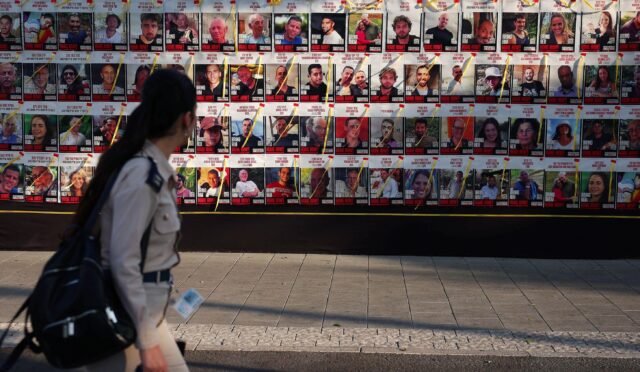Gaza’s Civil Defense Reports Casualties in Recent Airstrikes
On Friday, Gaza’s civil defense agency reported that Israeli airstrikes led to the deaths of at least 24 people, including ten family members from the same household. This tragic incident followed Hamas’s outright rejection of Israel’s latest ceasefire offer. Khalil al-Hayya, chief negotiator for the Palestinian militants, characterized the proposals from Israel as mere ‘partial agreements’ and emphasized the need for a ‘comprehensive deal’ to resolve the ongoing conflict that has lasted for 18 months.
In his statements, al-Hayya also called for increased international pressure to lift the total blockade imposed on Gaza that began on March 2. His request coincided with warnings from the United Nations about deteriorating conditions in the region, highlighting severe shortages of essential supplies such as medicine for the 2.4 million people trapped within Gaza’s borders.
Casualties from Strikes on Khan Yunis
A spokesperson for Gaza’s civil defense, Mahmud Bassal, reported the recovery of ten bodies and several wounded persons from the Baraka family’s residence and nearby areas, following Israeli strikes in eastern Khan Yunis. In addition to these casualties, at least 14 others were killed in multiple airstrikes across the territory, including attacks that targeted tents sheltering displaced individuals. Hundreds of thousands of these individuals have sought refuge in makeshift shelters to evade the escalating violence that erupted on October 7, 2023.
The humanitarian crisis continues to deepen as families are forced to flee, with many relying on limited resources in overcrowded shelters.
Israel Intensifies Military Operations in Gaza
Since the resumption of military operations on March 18, Israel has significantly ramped up its aerial bombardments and expanded ground troop movements throughout the Gaza Strip. The prior agreement for a ceasefire and hostage release, which began on January 19, fell apart two months later. While Israel sought to extend the initial terms of this deal, Hamas pushed for negotiations to establish the second phase, a proposal previously outlined by former U.S. President Joe Biden.
As tensions remain high, the violence shows no signs of abating, further complicating any potential pathways to peace.
Hamas’s Response to Israel’s Ceasefire Proposal
A source from Hamas revealed that the group submitted a written response to mediators concerning Israel’s recent proposal for a 45-day ceasefire. Reportedly, Israel has called for the release of ten hostages held by Hamas while also seeking the liberation of 1,231 Palestinian prisoners currently in Israeli detention. Furthermore, the proposal includes provisions for the delivery of humanitarian aid to Gaza.
However, a Hamas official indicated that this plan also sought the disarmament of Hamas, a demand the group steadfastly opposes. In a televised statement, al-Hayya criticized Israeli Prime Minister Benjamin Netanyahu for using ‘partial agreements’ to further his political agenda, reiterating that Hamas desires a comprehensive resolution that includes a prisoner exchange, an end to the war, halting the occupation, and initiating reconstruction efforts in Gaza.
Escalating Toll of Humanitarian Crisis
Health officials in Hamas-controlled Gaza report that the military’s renewed attacks have resulted in at least 1,691 additional fatalities, contributing to a staggering total of over 51,000 deaths since the conflict began. The violence initially sparked by Hamas’s assault on Israel has claimed the lives of 1,218 individuals, primarily civilians, according to an AFP count based on official Israeli statistics.
Given the increasingly dire situation, al-Hayya has implored the international community to intervene and apply pressure to end the ‘unjust blockade’ on Gaza, as conditions worsen significantly.
United Nations Issues Dire Warning
On Monday, the United Nations alerted that the humanitarian crisis in Gaza is now at its worst since the inception of the conflict. According to the UN’s Office for the Coordination of Humanitarian Affairs, no supplies have entered Gaza for over a month and a half, exacerbating the situation further. Gazan fisherman Abdel Halim Qanan recounted that his family has resorted to eating turtle meat due to a severe lack of food.
He stated, ‘There is no food, so it is an alternative for other sources of protein,’ highlighting the desperate measures families are forced to take amid the blockade.
Israel’s Strategy on Humanitarian Aid
On Wednesday, Israel’s Defense Minister, Israel Katz, announced that the country would persist in blocking humanitarian aid to Gaza as a tactic to apply pressure on Hamas. This strategy coincides with Israel’s transformation of vast areas of Gaza into buffer zones, further displacing countless Palestinian families.
An AFP evaluation, based on military-issued maps, revealed that Israeli control now encompasses over 185 square kilometers (approximately 70 square miles) of Gaza, which constitutes around 50 percent of the territory.
Impacts of Ongoing Violence on Civilians
The continuous conflict and military escalation in Gaza have wrought profound impacts on the civilian population. Families are suffering not only from the physical dangers of airstrikes and ground operations but also from chronic shortages of food, medical supplies, and shelter.
As the situation escalates, the plight of the civilians remains a pressing concern for humanitarian organizations and observers around the world.
Calls for Global Attention and Action
As Gaza grapples with heightened violence and humanitarian crises, calls for global solidarity and intervention have intensified. Many observers believe that without significant international pressure, both for the lifting of the blockade and for a comprehensive peace agreement, the cycle of violence will persist.
The international community faces a stark challenge as it contemplates measures to address the dire conditions in Gaza while navigating complex regional dynamics and political interests.







